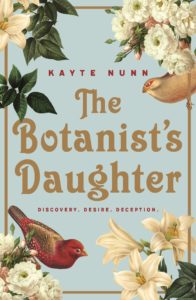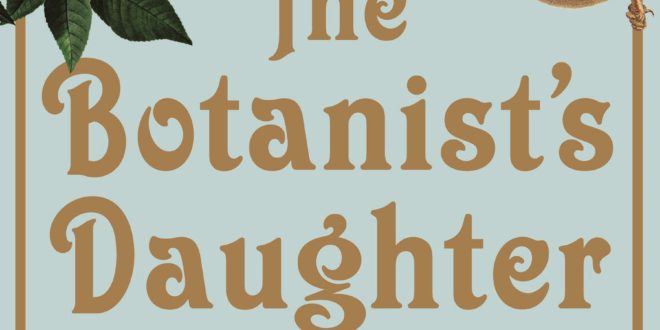 The cover of The Botanist’s Daughter is prettily decorated with birds and flowers and gold lettering. But as one should not judge a book by its cover I opened the book and began to read what turned out to be both a historical novel and a mystery which unfolds in two different time frames. The two main characters who, although they led very different lives more than a century apart, share a passion for plants.
The cover of The Botanist’s Daughter is prettily decorated with birds and flowers and gold lettering. But as one should not judge a book by its cover I opened the book and began to read what turned out to be both a historical novel and a mystery which unfolds in two different time frames. The two main characters who, although they led very different lives more than a century apart, share a passion for plants.
Anna’s Journey
Anna’s story starts in the autumn of 2017 in Sydney where she runs a small gardening company. Her beloved grandmother Gussy had insisted on living in her own home despite having Alzheimer’s. After her death, Anna inherits her rather dilapidated house. When she hires workmen to do it up they discover an elaborately decorated metal box and a diary in a cavity in the wall. Inside the box is a sketchbook full of exquisite watercolours of South American plants, a pressed flower, a small bag of seeds and a grainy photograph.
It looks as if they belonged to two different women. Anna is fascinated and wants to know more. So she embarks on a journey from Sydney to the Kew Gardens in London, and then on to a stately home in Cornwall to try to trace the owners and to see if there could possibly be a family connection.
Elizabeth’s Journey
Elizabeth’s story begins in 1886 in Cornwall. Although still young she had already shown a great artistic talent as a flower painter. Her Father John Trebithick, a well-known botanist, who frequently travelled the world to collect exotic and unusual plant specimens, often told her riveting stories about his adventures. She had begged him to be allowed to join one of his expeditions. But he had always refused. Young Victorian ladies were expected to stay home and improve their skills by painting the pretty flowers from their gardens.
As John Trebithick knew full well of the grave dangers his daughter would be exposed to if he let her accompany him, it seems incredible that as he lay dying he changed his mind. He extracted a deathbed promise from her that she would travel to Chile to find a very rare plant before a villainous rival got his hands on it. This plant was exceedingly poisonous yet also reputedly had miraculous healing properties which could be of great benefit to mankind.
Shortly after his death Elizabeth, accompanied by her faithful maid Daisy, did embark on a perilous and romantic adventure to Valparaiso, a city in Chile. Her journey and what eventuated after she landed is a fascinating and riveting tale.
Historical Fiction
Writing a successful work of historical fiction involves a considerable amount of research as well as imagination. This Kayte Nunn has done well. The descriptions of the plants and their names are authentic. And her evocative descriptions of life in Valparaiso and its surrounds in that era add considerably to the pleasure of reading this book.
Lady botanists who went off to do botanical paintings in faraway places were as scarce as hen’s teeth in Victorian times. But there was a handful including Marianne North, the only woman in the Western world who has a whole gallery dedicated to her work.
Kayte Nunn visited it in the Kew Gardens in London and was undoubtedly inspired by Marianne when creating Elizabeth. Both had the money to travel and were passionate and talented flower painters. But there are also big differences. Marianne painted in oils, whose colours are less fugitive, Elizabeth used watercolours. Marianne loved roughing it, preferred her own company and thought of marriage as a dreadful experiment. Elizabeth enjoyed socialising, took pretty dresses with her, and formed a romantic relationship. And of course Marianne was real and Elizabeth is fictional.
Anna’s quest to discover the truth
At first, Anna makes great strides in solving the mystery and her story is a relaxing read as she gradually unravels the threads and finds connections. But towards the end of the book, the plot thickens and there are some horrific twists, turns and surprises.
The verdict
I’d definitely recommend this book, especially to those who love gardening. It made me think about how much the lives of women who want to travel and have an adventure have changed since Victorian times.
The Botanist’s Daughter was written by Kayte Nunn. Publisher Hachette. RRP $34.99
Reviews by Lyn Potter
Parent and grandparent, Avid traveler, writer & passionate home cook










Join the Discussion
Type out your comment here:
You must be logged in to post a comment.